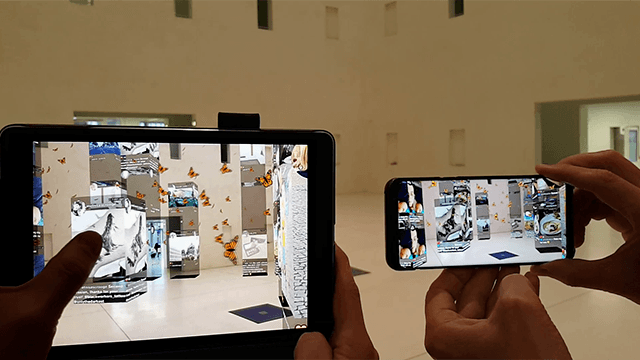In recent years, the integration of cutting-edge technologies in the education sector has revolutionized traditional learning methods. Among these technologies, Augmented Reality (AR) has emerged as a powerful tool that is reshaping the learning experience. By blending digital content with the real world, AR creates an immersive and interactive environment that enhances student engagement and comprehension.

What is Augmented Reality (AR)?
Augmented Reality (AR) is a technology that overlays digital elements, such as images, videos, or 3D models, onto the physical world through devices like smartphones, tablets, and AR headsets. Unlike Virtual Reality (VR), which immerses users in a completely virtual environment, AR enhances the real-world experience by adding virtual components.
The Role of Augmented Reality in Education
Augmented Reality has the potential to transform education by making learning more interactive, engaging, and effective. Traditional learning methods often rely heavily on textbooks and lectures, which can be passive and monotonous. However, AR allows students to visualize complex concepts, interact with virtual objects, and gain hands-on experience in a simulated environment.
Benefits of Augmented Reality in Education
- Enhanced Engagement and Interaction: Augmented Reality makes learning more exciting and interactive, capturing students’ attention and encouraging active participation. For instance, students can explore the human anatomy in 3D or conduct virtual science experiments.
- Improved Comprehension and Retention: By visualizing abstract concepts and engaging in hands-on activities, students can better understand and retain information. For example, AR can help students grasp mathematical concepts by visualizing geometric shapes and functions.
- Personalized Learning Experience: AR allows for personalized learning experiences tailored to individual learning styles and paces. Students can explore content at their own speed and receive real-time feedback.
- Bridging the Gap Between Theory and Practice: AR enables students to apply theoretical knowledge in practical scenarios. For instance, medical students can practice surgical procedures in a virtual environment before performing them on actual patients.
- Accessibility and Inclusivity: AR can make learning more accessible to students with disabilities. For example, visually impaired students can use AR-based audio guides, while students with hearing impairments can access visual and text-based content.
Applications of Augmented Reality in Different Educational Fields
- STEM Education: Augmented Reality can help students understand complex scientific concepts, such as molecular structures and physics simulations, through interactive 3D models.
- Medical and Healthcare Training: AR allows medical students to practice surgical techniques, study human anatomy, and diagnose diseases in a risk-free virtual environment.
- History and Geography: AR can bring historical events and geographical landscapes to life. Students can explore ancient civilizations or visit distant landmarks through virtual tours.
- Language Learning: AR can enhance language learning by providing interactive vocabulary lessons, pronunciation guides, and real-time language translation.
- Art and Design: AR can support creative fields by allowing students to visualize architectural designs, experiment with digital sculptures, and create virtual artwork.
Challenges and Limitations of Augmented Reality in Education
While Augmented Reality offers numerous benefits, its integration into the education system is not without challenges:
- Cost and Accessibility: Augmented Reality devices and software can be expensive, making it difficult for some schools and students to access the technology.
- Technical Limitations: AR applications require high-performance devices and stable internet connections, which may not be available in all educational settings.
- Lack of Training and Resources: Educators may require training to effectively use AR tools and integrate them into their teaching strategies.
- Privacy and Security Concerns: The use of AR in education raises concerns about data privacy and the protection of student information.
The Future of Augmented Reality in Education
As technology continues to evolve, the future of Augmented Reality (AR) in education looks promising. With advancements in AR hardware and software, the cost of implementation is expected to decrease, making AR more accessible to schools and students worldwide. Additionally, the development of AR-based educational platforms and content will further enhance the learning experience.
Educational institutions are increasingly recognizing the value of AR in enhancing student engagement and learning outcomes. Governments and private organizations are investing in AR technology to create innovative learning environments and bridge the gap between traditional and digital education.
Conclusion
Augmented Reality (AR) is revolutionizing the education sector by providing immersive, interactive, and personalized learning experiences. From STEM education to medical training and language learning, AR has the potential to enhance comprehension, retention, and engagement across various educational fields. However, addressing the challenges of cost, accessibility, and technical limitations is crucial for the widespread adoption of AR in education.
As we move forward, embracing AR technology will not only transform the way students learn but also prepare them for a future driven by digital innovation. By integrating AR into the classroom, educators can create dynamic learning environments that foster creativity, critical thinking, and collaboration.

